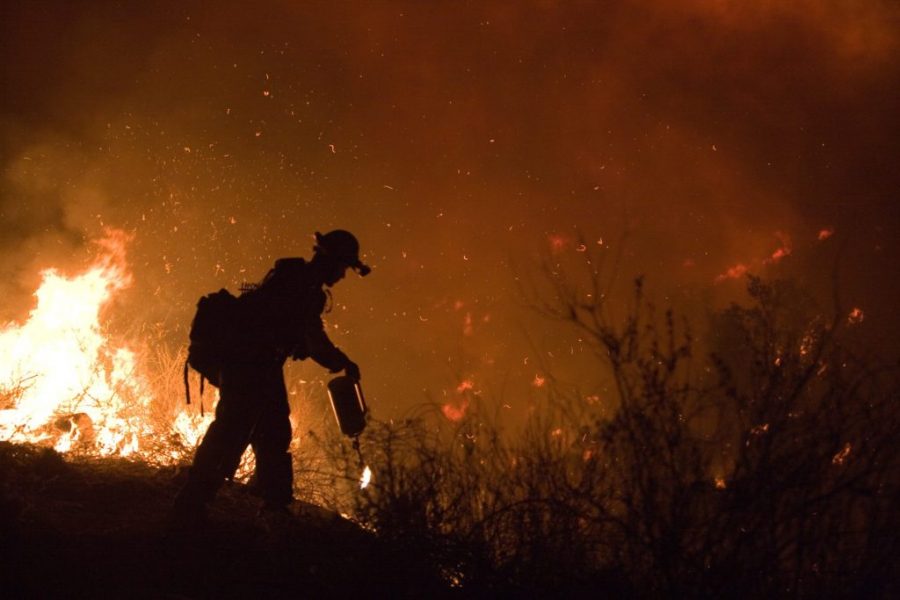When April showers subside and May foliage is dried out by incessant sunlight, Utah firefighters brace themselves for another season of near-constant summer wildfires along the Wasatch Front and beyond. Wildfires occur on a sporadic, unpredictable basis, but their regimented human counterparts remain on-the-ready, prepared to address developing infernos at any hour and in any condition.
The environmental influences of fires, both wild and man-made, are a mixed bag. “Fire has positive and negative impacts on ecosystems,” explains Jason Curry, Public Information Officer for the Utah Division of Forestry, Fire & State Lands. “Historically, fire has been a key component of ecosystem health in the West. Fires keep vegetation from getting overgrown and keeps things in balance.”
With the continually increasing human population and temperature in Northern Utah, this equilibrium becomes disrupted profoundly. “Since the early 1900s, the role of fire has changed: instead of small fires keeping vegetation in check, we get large fires that do catastrophic damage to ecosystems,” Curry says. “If fire burns at a low pace, it’s generally a good thing. Extreme fire behavior is generally negative.”
There is ultimately no ideal rate at which wildfires should occur. Most agree with Curry when he says they should happen “as often as nature will allow.” However ardently Smokey the Bear attempted to instill his message over the years, humans still remain responsible for over 90 percent of wildfires (in Utah’s case the remaining 10 percent can be attributed to lightning and other natural anomalies). Between these, there will likely be a wildfire every day of the summer, and that is not natural.
Fortunately, most wildfires are controlled within the first hour or two, but every year, a handful slip through the cracks. A fire on Antelope Island last July burned a whopping 15,330 acres, and another 20,614 acres blazed in Northern Utah’s Broad Canyon the following month.
The awe-inspiring capabilities of firefighting teams are due to efficiently connecting a massive network of individuals. According to the Utah Department of Natural Resources, every incident begins in virtually the same way: A wildfire is reported through 911, the operator dispatches fire engines, and the call is referred on to one of five Regional Interagency Fire Centers (IFC).
The IFC dispatches all available local resources capable of combating the fire, regardless of affiliation. The first firefighters on scene initially take command and report back to the IFC to assess the complexity of the fire. “As the fire increases in complexity, command may be transferred to someone with higher qualifications and more expertise.”
The “complexity analysis” ranges from the less technical Type 5 through severe and technical Type 1. Type 4 and 5 are representative of around 98 percent of Utah wildfires and require little more than a handful of local personnel to effectively extinguish them. When a fire progresses to Type 3, it enters the realm of “extended attack,” requiring multiple days and the assistance of personnel from outside of the local area, around 200 collectively. At Type 2 or 1, a pre-formed Incident Management Team comprised of 20-40 “overhead personnel” from various agencies oversee the fire. That might mean several hundred personnel dedicated to fighting the fire over several weeks, if not months. They pull out all stops, from fixed-wing “Air Attack” platforms to 10-12 person “Helitack Crews,” helicopter bucket ships then can drop more than 2,000 gallons of fire retardant or water.
Utah is the only state, aside from Alaska, that has Hotshot Crews employed and managed directly by the state government — all others are recognized as federal resources. These elite teams (of which our state has two) are hand crews of 20 firefighters vigorously trained in wildfire suppression tactics and are distinguished by exemplary physical fitness, expertise, and the ability to tackle the most stressful and technical of situations.
Rising global temperatures and ever-multiplying irresponsible outdoorsmen correlate with increasing wildfires in our high desert state. Local firefighters vigilantly stand by, ready to protect Utah’s ecosystem and people from the most ravenous of elements.
Photo courtesy of FEMA


